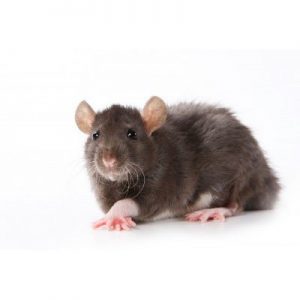Scientific Name: rattus
Common Names: Sewer Rat, Roof Rat, Brown Rat, Norway Rat, Black Rat
Color: Colors vary, generally grey, brown, or black in color
Size: The length and weight of rats depend on which species we are talking about and young vs adult sizes. Sizes range from approximately 10 to 40 cm in length.
FACT: The rat is the first of the twelve animals of the Chinese zodiac. People born in this year are thought to possess characteristics which are associated with rats, namely: creativity, intelligence, honesty, ambition, and generosity.
RATS CAN
- Pass through any opening larger than ½ inch (1.3 cm)
- Walk along horizontal wires and climb vertical wires
- Climb the inside of vertical pipes 1 ½-4 inches (3.8-10 cm) in diameter
- Climb horizontally on any type of pipe or conduit
- Jump vertically at least 36 inches (0.9 m) above a flat surface
- Reach about 13 inches (33 cm) above a flat surface
- Dive and swim underwater for as long as 30 seconds
- Swim up through the water seal, or trap, of toilets
- Swim as far as ½ mile (0.8 km) in open water
- Gnaw and leave marks on almost anything, including wood, chip board, lead pipes, cinder blocks, asbestos, aluminum, sheet metal, glass, and sun-dried adobe
SIGNS OF RAT PRESENCE
Droppings along runways, in feeding areas and near the rat’s shelter. Fresh droppings are soft
Urine along traveled pathways or in feeding areas. Both wet and dry rat urine glows under ultraviolet light.
Runs or burrows next to walls, along fences, next to buildings or under bushes and debris. Rats memorize these pathways and use the same routes habitually.
Smudge marks or rub marks on beams, rafters, walls, pipes and other fixtures. These are the result of oil and dirt rubbing off the rats’ fur along frequently traveled routes.
CONTROL
Rats are looking for food and shelter all year round. If you cut off access to those two things, it will help solve your rodent problem.
- Clean areas under stoves, refrigerators and dishwashers.
- Store dry food (rice, pasta and grains), dry pet food and birdseed in metal, glass or plastic containers.
- Empty pet food dishes after feeding and wash every night. Place bird feeders with seed away from the house.
- Store lumber, firewood and compost away from the house. Elevate lumber and firewood on pallets. Use thick plastic or metal trash cans with tightly fitting lids.
- Rake, collect and remove fruit, nuts and other foods that have fallen out of plants or trees.
- Repair all small holes in foundation, walls, basements, etc. Use caulking, a concrete patch, course steel wool or copper mesh. You can also fasten a sheet metal plate or cement over masonry.
- Properly dispose of garbage.
Restricting Access
- To prevent rats from coming indoors, make sure doors and windows have fine-mesh, well-maintained screens.
- Cover vents, ducts, holes around electrical conduits, floor drains and other openings with copper or aluminum screens, or with metal coverings. Inspect your foundation, walls, and basement for any rodent holes or cracks.
- Plug these holes with concrete, caulking, copper or aluminum mesh or steel wool.
Sanitation
- Put food away each day, and do not leave glasses of water out overnight.
- Keep food preparation and serving surfaces clean, and clean behind refrigerators and stoves.
- Dispose of garbage regularly and use tight fitting lids on garbage receptacles. Don’t leave food overnight in pet food bowls.
Yard Management
- Clip grass and weeds short, and thin shrubbery until the ground underneath is visible.
- Trim shrubs away from walls.
- Avoid over-irrigation of lawn and garden and ensure proper soil drainage.
- Move lumber piles, firewood, compost and other potential rodent habitats away from the walls of your home.
Exclusion is the best control method. All food must be stored in properly sealed jars or tins and kept in containers with tight-fitting lids. Garbage should be prevented from accumulating. Seal all openings to the outside, including wood around doors and windows; repair masonry and seal openings for utility lines, conduits, and drains. Inspect and check outdoor compost areas. Rodent baits, traps, or glue boards are all possible options to control the rat population.
The use of labelled rodenticide in exterior bait stations around a property is useful in eliminating an infestation. The use of snap traps with peanut butter bait, chocolate syrup or bacon grease work well. Be sure to pre-bait snap traps.

